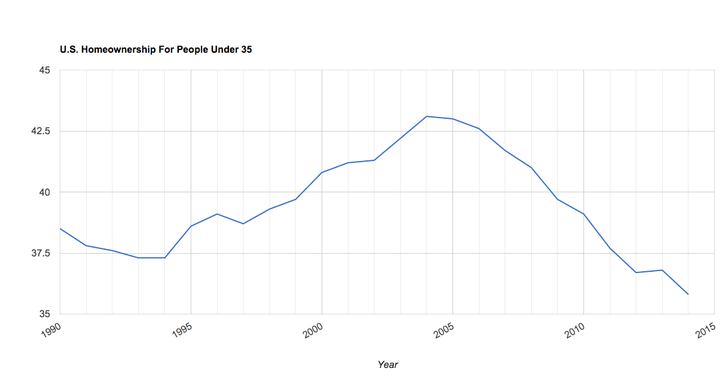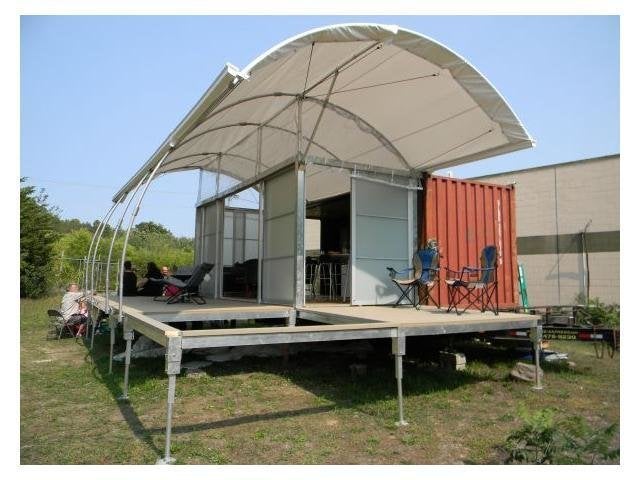Millennials can absolutely afford to buy homes -- as long as they don't mind living in a house smaller than a toolshed.
In over half of the biggest U.S. cities, the typical millennial can't afford a 1,000 square-foot home, according to a recent report. SmartAsset, a tech company that offers tools to make financial decisions, used their home affordability calculator to analyze median income and net worth of people under age 35. It then compared the results to interest rates and the down payment needed to buy a home in the largest 23 cities.
The calculator, which is supposed to help a potential homebuyer determine what size and cost they can afford, might be useful for, say, a middle-class family trying to decide if they have the resources to buy a house with a spare bedroom. But the results can get absurd in many of the largest cities.
In Denver, Los Angeles, Philadelphia and Washington, D.C., millennials can afford a house that measures less than 500 square feet. In New York, that number is 165 square feet. In San Francisco, it's 135 square feet -- smaller than the city's parking spaces, as Fortune points out.
Millennials could afford the biggest houses in Detroit and Memphis, and Chicago is more reasonable than the coastal cities it competes with.
The idea of a 200-square-foot house would make many people balk, but there’s been growing interest in “micro-housing” units, with developments -- mainly apartment buildings -- underway or completed in most of the priciest cities. And there’s at least one pitch to build affordable small homes specifically for millennials, though it’s unclear if the idea, floated by a councilman in Washington, is viable or even legal.
But it’s not like these units are plentiful: houses are actually getting larger each year. In 2014, the median size for new single-family houses was 2,453 square feet, according to a report from the U.S. Census Bureau. Apartment units intended for sale are much smaller, but just 14 percent of apartments built for sale in 2015 were under 1,000 square feet.
The SmartAsset findings -- which don't look at small cities and suburban areas, where homes are likely to be more affordable -- help explain why fewer people in their 20s and early 30s are buying houses than a decade ago. The flippant explanation has often been that millennials are putting off adulthood, content to camp out in their parents’ basement or curl up under the desk at their coworking space rather than grow up and get a mortgage.

However, 80 percent of millennials do want to buy homes, according to a survey last year from Trulia, and some pundits have predicted a "millennial homebuying boom" in 2016. Rents are rising, particularly in places like San Francisco and New York. According to Trulia, it would be cheaper for millennials to buy rather than rent in every city that SmartAsset looked at except San Jose, California.
But just because it's cheaper in the long run doesn't mean buying is possible for millennials -- many of whom, saddled with lagging incomes and huge student loan burdens, struggle to save enough money to make the leap to home ownership. Half of millennials in the Trulia survey said that getting a new job, a raise or saving enough for a down payment would encourage them to buy in 2016 -- meaning they're held back by lack of money, whether income or savings.
A few caveats to the SmartAsset report make the situation look even worse. Data editor Nick Wallace said they assumed buyers had good to excellent credit and those with poor credit scores would be able to afford less. In addition, they didn’t take closing costs into consideration, which may overstate the amount of home that’s affordable, Wallace wrote. While they vary by location and buyer, a nationwide survey from personal finance website Bankrate found buyers pay $1,850 on average in closing costs.
"While it is common for new homebuyers to receive help from parents and relatives to pay these additional costs,” Wallace wrote, “those who do not have outside help would likely not be able to afford a home at all, according to our analysis.”
Kate Abbey-Lambertz covers sustainable cities, housing and inequality. Tips? Feedback? Send an email or follow her on Twitter.
Also on HuffPost:

